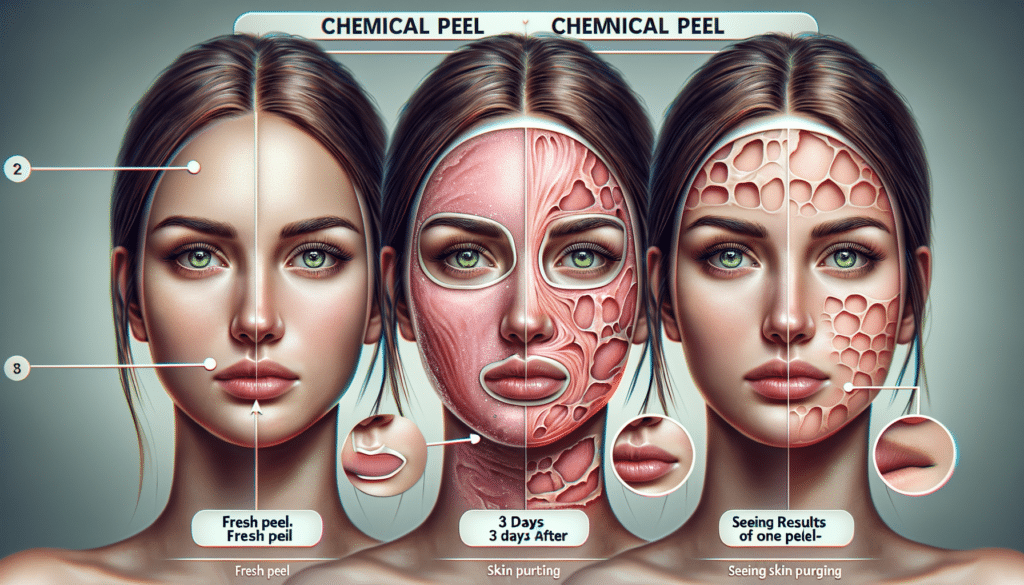What is a Chemical Peel?
A chemical peel is a cosmetic treatment that involves the application of a chemical solution to the skin, which causes the outer layers to exfoliate and eventually peel off. The new skin that emerges is typically smoother and less wrinkled than the old skin, providing a rejuvenated appearance. Chemical peels are used to treat a variety of skin issues, including acne scars, sun damage, fine lines, and uneven skin tone.
There are different types of chemical peels, categorized by their depth of penetration: superficial, medium, and deep peels. Superficial peels, often called “lunchtime peels,” use mild acids like alpha-hydroxy acid to gently exfoliate the outer layer of skin. Medium peels, such as those using trichloroacetic acid (TCA), reach the middle layer of skin, treating more pronounced wrinkles and pigmentation. Deep peels, which use phenol, penetrate deeper into the skin and are used for more severe skin conditions.
Choosing the right peel depends on your skin type and the specific concerns you want to address. It’s crucial to consult with a dermatologist or skincare professional to determine the most suitable option for your needs.
How Long Will a Chemical Peel Last?
The longevity of the results from a chemical peel can vary based on several factors, including the type of peel, the condition of the skin before treatment, and how well you care for your skin afterward. Superficial peels generally offer results that last for a few weeks, as they target the outermost layer of skin. Medium peels can provide effects that last several months, while deep peels can produce long-lasting results for several years.
It’s important to note that while the effects of a chemical peel can be significant, they are not permanent. The natural aging process and external factors like sun exposure continue to affect the skin. Regular maintenance treatments and a good skincare routine can help prolong the benefits of a chemical peel.
For those considering a chemical peel, it’s essential to have realistic expectations and understand that multiple treatments may be needed to achieve and maintain desired results. A skincare professional can provide guidance on the frequency and type of peels that would be most beneficial for your skin.
What the Face Might Look Like 3 Days After a Chemical Peel
Three days after undergoing a chemical peel, your skin may appear to be in the midst of its peeling phase. This is a normal part of the process as the treated skin begins to shed, revealing the new, healthier skin beneath. During this time, you might notice:
- Redness and sensitivity, similar to a sunburn.
- Visible peeling or flaking of the skin.
- Some tightness or dryness as the skin heals.
It’s crucial to resist the temptation to pick or peel the skin manually, as this can lead to scarring or infection. Instead, keep the skin moisturized and follow the aftercare instructions provided by your skincare professional. Gentle cleansing and the application of soothing, hydrating products can help ease discomfort during this phase.
While the appearance of the skin might be concerning to some, remember that this is a temporary stage. The peeling is a sign that the treatment is working, and soon you’ll begin to see the benefits of the peel as the new skin emerges.


